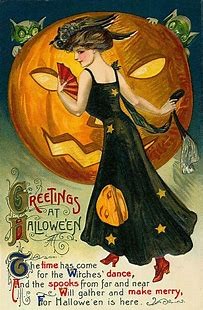Halloween ranks among the oldest traditions in the world, originating from the Celtic festival of Samhain, pronounced “Sah-ween.” This festival historically connects to ancestors, the earth, and the year’s transition, marked by communal celebrations. During this period, communities would stockpile food, slaughter livestock, and dispose of bones in “Bone Fires,” now known as bonfires. They would convene for feasting and drinking, anticipating the presence of their ancestors’ spirits. It was customary to lay out food for the deceased, and there was a belief that mystical beings like elves, fairies, and darker entities might visit. The Celts held that during Samhain, the barrier between the living and the dead thinned, permitting the deceased to mingle with the living. For protection against malevolent spirits, they would smear their faces with bonfire ashes, a custom called “guising,” which eventually transformed into mask-wearing. This practice enabled the living to acknowledge and reveal themselves to their ancestors’ spirits while staying concealed from harmful spirits.
All Hallows’ Eve
The precise moment when these rituals were incorporated into the celebration of Samhain is unclear, but they likely originated before the arrival of Christianity in Ireland during the 5th century. On October 31st, a bonfire was lit on the Hill of Tlachtga in County Meath to signify the commencement of the Samhain celebrations. Concurrently, a more substantial fire was kindled at the nearby Neolithic site, the Hill of Tara. Archaeologists from University College Dublin have carbon-dated artifacts, confirming that the site has hosted ceremonial fires for more than 2,000 years.
The Christianization of pagan festivals is a well-documented phenomenon, which includes the Samhain festival. Pope Gregory III moved the feast to November 1st, a decision that continues to spark debate. Many scholars argue that this was an intentional move to Christianize Samhain, turning it into All Hallows’ Eve, a theory that fits with the Christian tradition of assimilating pagan elements to ease the conversion of local populations. Following its Christianization, All Hallows’ Eve became a night of vigil, prayer, and fasting, preceding the more solemn celebration of All Saints’ Day. Today Halloween is celebrated in various ways around the world, but it is most widely observed in the United States and Canada.
